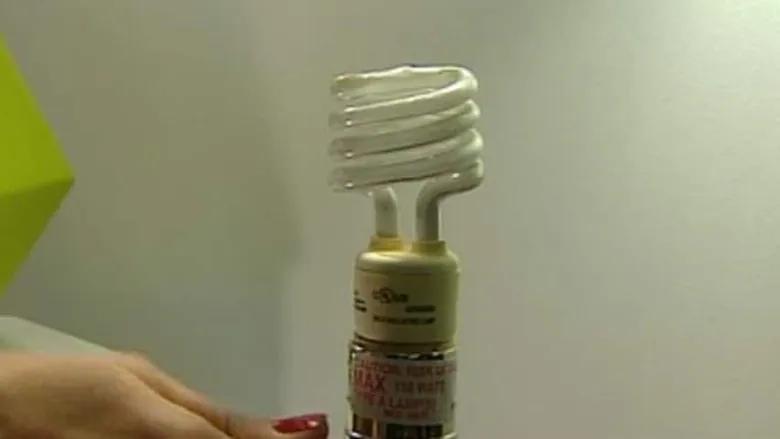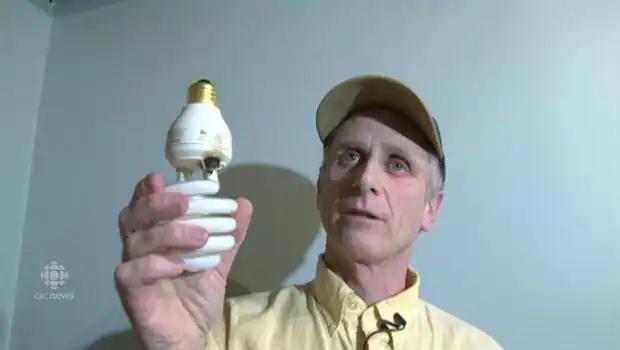Light bulbs are an essential part of our daily lives, providing us with the illumination we need in our homes, offices, and public spaces. However, there are instances where a light bulb may suddenly pop and emit smoke, causing concern for those nearby. In this article, we will explore the reasons behind why light bulbs spark and smoke, and what actions you should take if you encounter such a situation.

Understanding CFLs and Their Lifespan
Super energy-efficient compact fluorescent lamps (CFLs) have gained popularity due to their ability to consume approximately 75 percent less energy than traditional incandescent bulbs. Additionally, CFLs have a longer lifespan and can last up to 10,000 hours if used correctly. However, when CFLs reach the end of their life, they burn out differently compared to incandescent bulbs, which can be surprising to some people.
As a CFL nears its end, you may notice a dimming of the light. When it eventually burns out, a distinct pop sound and a slight odor may accompany the process. In some cases, the base of the bulb may turn black and produce smoke. These occurrences are normal and indicate that the CFL's end-of-life mechanism worked correctly.
It is essential to ensure the safety of CFLs before purchasing them. Look for the mark of an independent safety testing laboratory, such as Underwriters Laboratories, on the packaging. This label signifies that the bulbs have undergone repeated safety hazard tests.
Common Mistakes with CFLs
While CFLs are energy-efficient and long-lasting, there are certain precautions and guidelines to follow to ensure their optimal performance and safety:
- Don't toss burned-out CFLs into the trash: Instead, take them to a local department store or retailer that accepts bulbs for recycling. Many home improvement warehouses, such as Lowe's, have dedicated CFL recycling centers near their entrances.
- Avoid using CFLs in fully enclosed, recessed fixtures: The heat generated within these fixtures can cause CFLs to function improperly. However, CFLs can generally be used in fixtures that are not completely recessed. Always check the packaging to see if the CFL can be used in an inverted position.
- Minimize turning CFLs on and off frequently: CFLs are not suitable for applications where you need to turn the lights on and off frequently or leave them burning for only a few minutes, such as in a closet. Excessive switching can negate the long lifespan of the bulb. CFLs are best suited for applications where the light will remain on for 15 minutes or longer.
- Protect CFLs from outdoor elements: Unless explicitly stated on the packaging, avoid exposing CFLs to outdoor conditions without a protective cover. Check the packaging for the recommended range of operating temperatures.
- Avoid using CFLs in fixtures with excessive vibration: CFLs may fail prematurely in fixtures that experience a lot of vibration, such as ceiling fans or garage door openers. Consider alternative lighting options for these areas.
- Use CFLs specifically designed for dimmer switches: Regular CFLs are not compatible with dimmer switches and may burn out quickly. Choose CFLs that are specifically labeled for use with dimmers if you require adjustable lighting.
- Understand the limitations of regular CFLs with three-way switches: While CFLs can function correctly in the middle switch position of a three-way switch, they do not produce light in the same way as incandescent bulbs. Some manufacturers produce three-way CFLs, which are specifically designed for this purpose.
In conclusion, witnessing a light bulb sparking and smoking can be alarming, but it is often a normal occurrence for CFLs reaching the end of their lifespan. Understanding the characteristics and limitations of CFLs, as well as following the recommended guidelines, can help ensure their safe and efficient use. Remember to dispose of burned-out CFLs properly by recycling them at designated collection points. By taking these precautions, you can continue to enjoy the benefits of energy-efficient lighting while minimizing any potential risks.
Can a light bulb sparking and smoking be dangerous?
No, a light bulb sparking and smoking, particularly in the case of CFLs, is typically a normal part of the bulb's end-of-life mechanism. However, it is always important to prioritize safety and follow the recommended guidelines for using and disposing of CFLs.

Can I use CFLs in fixtures with dimmer switches?
Regular CFLs are not compatible with dimmer switches and may burn out quickly. If you require adjustable lighting, choose CFLs specifically labeled for use with dimmers.
How should I dispose of burned-out CFLs?
It is recommended to take burned-out CFLs to a local department store or retailer that accepts bulbs for recycling. Many home improvement warehouses have dedicated CFL recycling centers for easy and safe disposal.
Can CFLs be used in fully enclosed fixtures?
CFLs are not suitable for use in fully enclosed, recessed fixtures as the heat generated within these fixtures can cause the CFLs to function improperly. However, CFLs can generally be used in fixtures that are not completely recessed. Always check the packaging for specific usage instructions.
If you want to know other articles similar to Why light bulbs spark and smoke: explained you can visit the Lighting category.


Related Articles